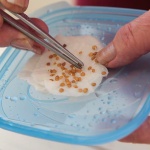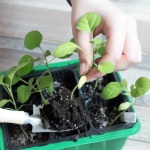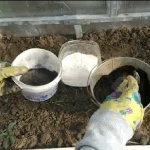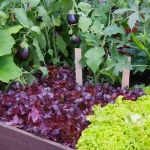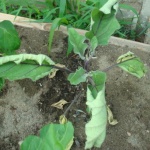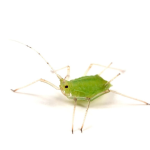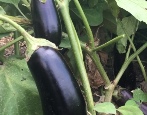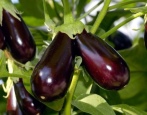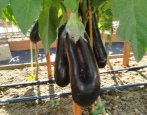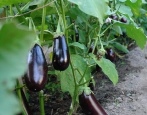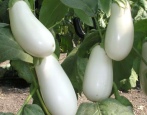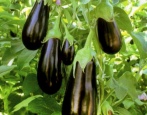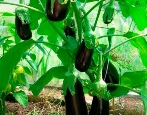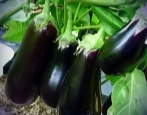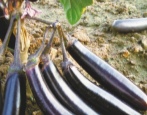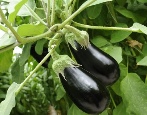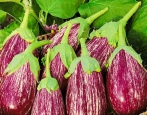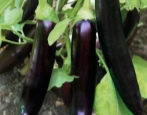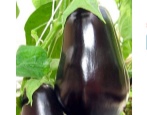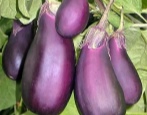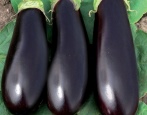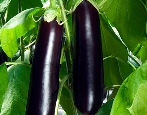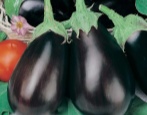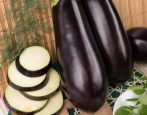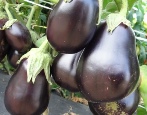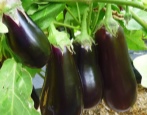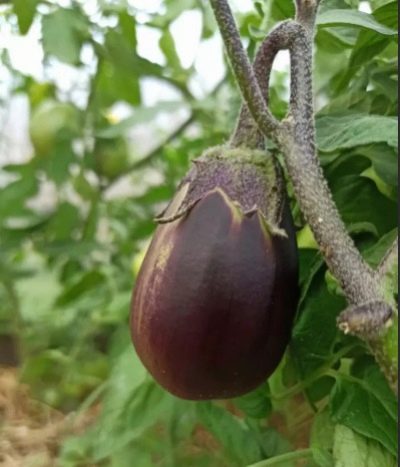
- Authors: Dederko V.N., Postnikova O.V.
- Year of approval: 2006
- Growth type: undersized
- Bush height, cm: up to 40
- Fruit shape: cylindrical
- Fruit weight, g: 160-170
- Yield: high yielding
- Fruit color: dark purple
- Ripening terms: early
- Pulp (consistency): gentle, without voids
Eggplant Japanese dwarf is an undemanding variety that gardeners like for its high yields and increased resistance to various external influences.
Description of the variety
The Japanese dwarf belongs to a group of plants with an early maturity. The main characteristics of the variety:
bushes are quite compact, grow up to 40 cm;
stems - powerful, withstand the weight of the crop without difficulty;
leaf plates are large, saturated green.
The variety is ideal for growing both in greenhouse conditions and outdoors.
Characteristics of the appearance of plants and fruits
The Japanese dwarf variety stands out among other eggplants for its small size. But the bushes are ideal for planting in small areas where there is practically no place. Characteristics of eggplant fruits:
length - up to 18 cm;
weight - 160-170 g;
shape - cylindrical;
skin color - dark purple or almost black towards the end of ripening.
The vegetable has a fairly light flesh.
Purpose and taste
The fruits of the Japanese dwarf attract gardeners with a pleasant taste, which was also appreciated by the tasters. Eggplants of this variety are used mainly for preservation, freezing, less often they are used to prepare main courses or salads.
Ripening terms
The bush forms the first fruits after 80-95 days from the moment of planting. In the case of growing crops in a greenhouse, the ripening time is reduced.
Yield
The average yield of the Japanese dwarf eggplant is 0.7 kg per square meter of the garden. However, if the necessary agrotechnical recommendations are followed, it will be possible to increase the yield.
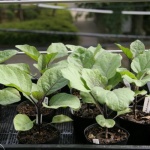
To get a tasty and bountiful eggplant crop, you must first grow strong and healthy seedlings. This culture is considered very capricious, therefore, you need to take care of seedlings when growing at home as correctly and carefully as possible.
Growing and care
The Japanese dwarf can withstand temperature and wind changes. However, gardeners recommend growing the variety as seedlings. First of all, they start planting seeds. Work is usually carried out in early spring. Main steps.
Selection. For selection, a glass of warm water is used, where the seeds are placed for a day. Whole and large specimens will remain at the bottom and can be planted.
Disinfection. It is carried out by soaking the selected seeds in a solution of potassium permanganate of low concentration. And also the seeds can be calcined for 20-30 minutes at low temperatures.
Treatment. At the end, eggplant seeds are additionally soaked in growth stimulants. Special formulations are sold at any gardening store.
Seeds are planted in pre-prepared containers, which are often peat pots. The maximum planting depth should not exceed 1-2 cm, this will be enough for the seed to take root and not die. After planting, the soil is watered abundantly and covered with gauze or glass.
Transplanting ready-made seedlings into open ground or a greenhouse is carried out by the end of May according to the scheme.
A distance of 40 cm is maintained between seedlings in a row.
70 cm recede between the rows.
The planting depth of seedlings should not exceed 7 cm.
When the disembarkation is complete, it remains to take care of the culture.
Watering. Watering the eggplants is recommended in accordance with the moisture content of the soil. If the ground is dry, the plant can be watered abundantly. In the dry season, the culture will require an increase in the volume of the applied liquid, and in the rains it is better to reduce this volume, or even stop watering for the time being.
Top dressing. Usually, organic matter or mineral complexes are used as fertilizers, which are applied to the soil about 3-4 times a month. This is enough for the plant to start active growth, bloom and form large fruits.
Weeding and loosening. The procedures are carried out after watering, saturating the earth with oxygen and preventing the spread of diseases and pests.
Additionally, it is worth taking care of the shaping of the bush, which will raise the yield indicator. It is better to do this 14 days after moving the seedlings to the garden or greenhouse. In this case, compact bushes will put all their strength into the formation of fruits. When grown in a greenhouse, you should additionally take care of regular ventilation, otherwise the eggplants will die.
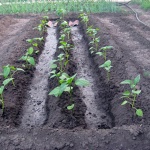
Planting eggplant is one of the most important stages in growing. When choosing a place for eggplants on your site, it is important to remember that this culture should be in warm soil, constantly illuminated by the sun. The plant is also very fond of spacious, open spaces, since its roots can grow over sufficient areas.


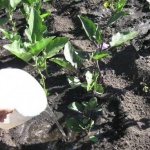
Soil requirements
Planting eggplants is usually carried out by the end of spring or early summer. Basic recommendations for choosing a site:
when choosing a place, preference should be given to sunny and calm areas;
the acidity level must be neutral, otherwise it is worth using special formulations to lower the pH;
before planting seedlings, the soil should be thoroughly fertilized and loosened.
Compliance with the listed recommendations is an excellent opportunity to easily raise the yield indicator.
Disease and pest resistance
The Japanese dwarf has a fairly strong immune system. The variety does not allow the development of diseases and repels pests, but this does not mean that the bushes do not need to be processed. Gardeners recommend preventive treatment with special compounds that can be purchased at gardening stores. And you can also spray the bushes with folk remedies. If the disease has been detected, the affected elements should be removed.
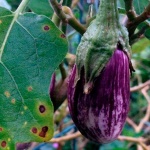
Eggplant is one of the most demanding crops. For its successful cultivation, it is necessary to create optimal conditions, as well as to carry out prevention and fight against diseases and pests. Eggplant often infects both fungal and viral diseases. If treatment is not started on time, you can completely lose the crop.
